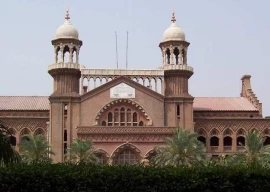
KARACHI:
Over 50% of Pakistanis keep their savings at home while 47% say they have never needed a bank account, according to the Financial Literacy Gap Assessment conducted as part of the Nationwide Financial Literacy Programme (NFLP).
Speaking at the launching ceremony of the NFLP on Friday, State Bank of Pakistan (SBP) Governor Yaseen Anwar said there was evidence that financially literate people faced fewer debt and budgeting problems than financially illiterate people.
The SBP has launched the NFLP with an endowment under the Asian Development Bank’s Improving Access to Financial Services Programme, which aims to increase understanding of basic financial concepts, products and services among low-income Pakistanis to help them make better economic decisions.
Workshops will be held under the programme to teach people money management skills and encourage them to use the formal banking system.
The assessment, which was carried out to measure prevailing attitudes towards banking, insurance, investment, debt management etc, says that 79% of respondents believe their sources of information about money management techniques, resources and opportunities were other family members.
Similarly, it reports that 22% of the respondents said they did not know the main benefit of investing money. While 84% of them showed interest in learning more about investment, the survey says the primary forms of investment are personal business (33%) and livestock (10%).
While the NFLP will target functionally illiterate people with the help of pictorial handbooks and activity-based workshops, it will also cater to the needs of those people who are part of the formal banking system, but are still not completely aware of the optimal utilisation of financial products and services.
It also found out that 77% of the respondents had never had an insurance product. The main reason for having no insurance was: “I can’t afford it” (58%).
The number of targeted beneficiaries of the NFLP in the first phase is 45,000, which will be increased to 455,000 in the second phase. The targeted geographical area is 60% rural, 20% peri-urban and 20% urban with the equal number of male and female participants aged between 18 and 60 years and earning a monthly household income of less than Rs20,000.
Published in The Express Tribune, January 21st, 2012.
COMMENTS (1)
Comments are moderated and generally will be posted if they are on-topic and not abusive.
For more information, please see our Comments FAQ













































Maybe if the SBP didn't insist on asking so many questions when people went to open bank accounts things would be a little bit different. Worse still the SBP is hindering the growth of mobile banking. Even Kenya is ahead of Pakistan in this regard. They have a widely used mobile payment system that is a model for the entire world. The ironic thing is that there are so many similarities between the two countries. Both are developing countries with low literacy rates, high mobile phone penetration and a low savings rate. The difference is in the attitude of the Kenyan Central bank which encourages mobile payments instead of insisting on archaic levels of documentation like the SBP.